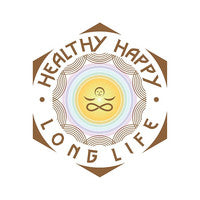It’s National Eating Disorders Awareness Week and this year’s mission is to educate people, spread hope to those who are recovering, and give the public resources they can use to help save lives.
What are eating disorders?
Eating disorders are a range of serious psychological conditions that cause a person to develop unhealthy eating habits that have a negative impact on one’s health. A person with an eating disorder can start with being obsessed with weight, shape, and food that then leads to harmful eating behaviors. These dangerous habits have a significant effect on your body’s capability to obtain proper nutrition. This could impair the digestive system, heart, bones, cause body pains, and lead to other diseases.
Eating disorders can affect anyone at any age but it’s more common to juvenile and young women. A study showed that up to 13% of female youth may suffer from one eating disorder by the time they reach 20.

Physical symptoms
People battling with eating disorders may show some of the following symptoms:
- Obvious weight fluctuations
- Constipation, acid reflux, stomach cramps, and other gastrointestinal complaints
- Irregular menstruation
- Concentration difficulty
- Unusual lab results
- Lightheadedness
- Loss of consciousness
- Always feeling cold
- Having trouble sleeping
- Bruises and cuts at the top of finger joints due to frequent induced vomiting
- Dental problems
- Dry skin
- Brittle hair and nails
- Swelling around the area of salivary glands
- Fine body hair
- Hair loss
- Muscle weakness
- Mild anemia
- Decelerated pulse rate and breathing. Plummeting blood pressure
- Weakened immune functions

Emotional symptoms
Those suffering from eating disorders may exhibit some of the following emotions and behaviors:
- Extremely afraid of gaining weight
- Unfavorable or twisted self-image
- Always check the mirror for perceived defects
- Self-confidence depends on body weight and shape
- Afraid of eating with others or in public
- Obsession with food
- Refuses to eat or eat small portions only
- Hiding or hoarding food
- Secretly eating
- Going to the bathroom after eating
- Uncommon table rituals before consuming the food
- Not concerned over excessive weight loss
- Consumes healthy or safe foods only
- Withdrawal from society
- Make reasons to not eat
- Cook fancy meals for others, but refuse to eat
- Consuming weird food combinations
- Wear bulky clothes to hide weight loss
- Lacking in emotion
- Moody
- Uneasiness

Types of eating disorders:
Anorexia nervosa
Commonly known as anorexia, this type of eating disorder can be life-threatening. Anorexia usually develops during the teenage years or early adulthood. People struggling with anorexia generally see themselves as being overweight even if they’re alarmingly underweight. They have a tendency to monitor their weight constantly, strictly limit their caloric intake, and stay away from certain kinds of foods.
Bulimia nervosa
Bulimia, just like anorexia, usually develops around the teenage years and young adulthood. It’s also more common to women than men. People suffering from bulimia often consume extremely large amounts of food at a certain time. This binge-eating doesn’t stop until they become in pain due to fullness. To feel better, they would then try to flush out the excessive food by forcing themselves to vomit, taking laxatives, fasting, taking diuretics, use enemas, and exercise excessively.

Binge eating disorder
Binge eating disorder is considered to be one of the most common eating disorders. It usually develops in teens and young adults but can still be acquired later in life. Just like bulimia, people with binge eating disorder eat extraordinarily huge amounts of food. However, they do not purge what they ate or have calorie restrictions. People suffering from this disorder tend to be overweight or obese.
Pica
Pica is an eating disorder that involves compulsive eating of things that have no nutritional value like ice, paper, soil, or any other thing that is not food. Pica can happen to children, adolescents, and adults. However, most of the time, this disorder occurs in persons with a mental disorder, pregnant women, and children.

Rumination disorder
A newly recognized eating disorder, rumination disorder is described as a condition wherein a person chews food, swallows it, regurgitates it, chews it again then swallows it again or spits it out. This usually occurs 30 minutes after a meal. It can occur in infants, children, and adults.
Avoidant/restrictive food intake disorder
This disorder is formerly known as “feeding disorder of infancy and early childhood” a disorder found in children 7 years old and below. Although this disorder usually occurs in infants and children, adults can have it too and it’s common to both men and women.
Causes
What exactly causes eating disorders is still unknown. To some people, it may be genetics while some may be caused by biological conditions like chemical changes in the brain. There are also some factors that could increase the chance of having an eating disorder such as dieting, starvation, stress, mental health disorders, and family history.

Eating disorders can affect anyone regardless of weight, age, gender, race, sexual preference, education, occupation, and social standing. These disorders are conditions that affect physical and mental health so they should not be taken lightly.
If you, a loved one, or a person you know is suffering from any of the eating disorders mentioned above, please seek professional help.
You can visit https://www.nationaleatingdisorders.org/get-involved/nedawareness for resources to help spread awareness and education this week and every day of the year!
You might also be interested to read 15 Simple Ways To Help Boost Your Energy and 15 Healthy Gifts for a Healthy Happy Valentine’s Day.

